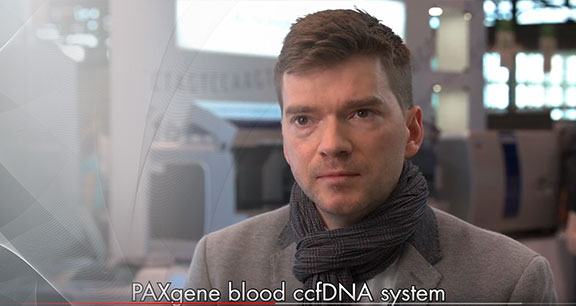

An important biomarker for non-invasive prenatal testing (NIPT) and liquid biopsy, circulating cell-free DNA (ccfDNA) is easily obtainable through a simple blood draw. ccfDNA from plasma has the ability to provide a breadth of information to researchers.
Blood collection, stabilization and ccfDNA extraction for reliable downstream assay performance
Learn about the non-crosslinking stabilization chemistry in the PAXgene Blood ccfDNA Tube and how other tubes may impact analytical sensitivity in downstream reactions.
Understand the importance of preanalytical sample preparation/stabilization and how it may affect analytical sensitivity in downstream analysis:
Stabilization chemistry matters
Check out our poster presented at the AACR Virtual Meeting II
Five minute read on how to perform multimodal analysis from a single blood sample. Learn how to extract and analyze ccfDNA and additional analytes like RNA from CTCs or gDNA from a single sample of blood collected in the PAXgene Blood ccfDNA Tube*.
Researchers in the field of non-invasive prenatal testing analyze fetal DNA present among maternal ccfDNA from blood of a pregnant woman to determine the risk that the fetus will be born with certain genetic abnormalities.
Liquid biopsy is a minimally-invasive method of collecting a patient biofluid sample to test for biomarkers of disease. Liquid biopsy is commonly used for many applications in cancer research.
Click here to learn more about QIAGEN's manual and automated Sample to Insight workflows for liquid biopsy and cancer research applications.
*The PAXgene Blood ccfDNA Tube is for Research USE Only. Not for use diagnostic procedure.

Meet our experts on upcoming events to discuss the possibilities how to optimize your preanalytical workflows

Watch this recent PreAnalytiX webinar focusing on "Liquid Biopsy Workflow Optimization for Improved Assay Sensitivity and Multianalyte Applications of Cell-Free RNA, DNA and CTCs"

Discover our variety of scientific posters which were presented at conferences around the world